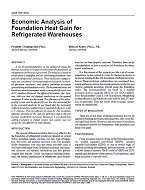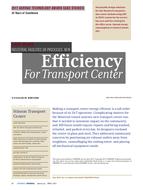The purpose of an air distribution system is to deliver the conditioned or ventilation air fromthe air-handling system or intake to the various terminals at the required quantities. Thesesystems are composed of the fan(s), filters, heat exchangers, straight duct sections, branchtakeoffs, elbows, dampers and other necessary elements (1). Typical ducts are manufacturedfrom galvanized steel, aluminum, plastic or even concrete elements with round, oval or rectangularcross sections. This work is concerned with the rectangular cross section ducts only,which constitute the most commonly used type.
The outlay of an air duct system is completely defined by the coordinates of its nodes, itselements and the cross sectional dimensions. The final design results in a compromise between operation and installation costs.
Since the design of an air distribution system involves a tedious process and necessitatesmany repeated computations, a digital computer may have certain advantages. It appears, however, that only recently attempts have been made to employ the computer notonly as a large capacity and accurate calculator but also as a tool for affecting an optimaldesign of duct systems.
Citation: ASHRAE Transactions, Volume 85, Part 1, Philadelphia, PA
Product Details
- Published:
- 1979
- Number of Pages:
- 17
- File Size:
- 1 file , 730 KB
- Product Code(s):
- D-PH-2523


